|
Here's a simple daily routine you can follow to improve your mobility and flexibility and might just be a secret to reversing the ageing process. They are based on the Five Tibetan Rites, an ancient yoga practice created by Tibetan monks over 2,500 years ago. The practice works on the body’s energy fields (chakras) said to contribute to the aging process. Just like any form of stretching, regular practice helps to relieve joint pain and stiffness, improve circulation, manage anxiety and enhance sleep, and improve energy, mental clarity, strength and coordination. For maximum effect you need to do them 21 of each per day, hmm that’s quite a lot! Start with 5 of each and build up if you want to, but even doing 5 of each per day will make a difference. (Source: Healthline.com) Rite 1 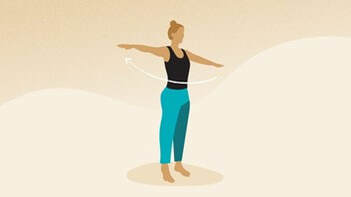 To speed up the chakras stand up straight and stretch your arms out to the side parallel with the floor, palms down. Slowly spin your body clockwise keep your eyes open looking toward the ground without moving your head. Spin as many times as you can (start with 3 or 4), stop when you feel dizzy. Rite 2 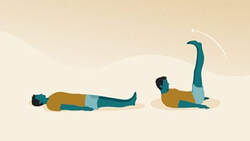 Now using deep rhythmic breathing throughout, lie flat on your back with your arms at your sides, palms on the floor. Inhale and move your chin toward your chest while lifting your legs up, knees straight as possible (this will improve over time). Exhale and slowly lower your head and legs to the starting position and relax. Rite 3 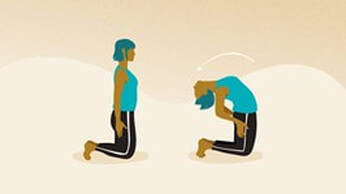 Continuing with your deep breathing, close your eyes to focus inward. Kneel on the floor, knees shoulder-width apart and hips aligned over your knees. Straighten up and place your palms on the back of your thighs. Keeping your there, inhale and drop your head back, arching your spine to open your chest, then exhale and drop your head forward, moving your chin toward your chest. Rite 4 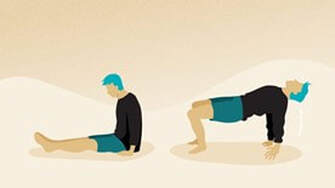 Sit on the floor with legs straight ahead, feet shoulder-width apart and palms faced down on the floor beside you. Drop your chin to your chest then inhale and gently drop your head back as you lift your hips and bend your knees into a tabletop position with your head gently tilted back. Keep holding your breath and contract your muscles, then exhale and relax as you come down to sitting position, sitting up straight. Rite 5 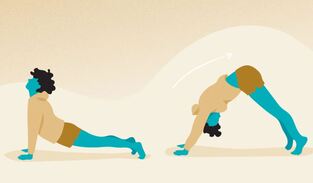 Plant your palms in front of you and extend your feet behind you, shoulder-width apart. Straighten your arms and arch your spine, then, inhale and lift your hips, moving your body into an upside down “V” shape referred to as ‘Downward facing dog’. Move your chin toward your chest and straighten your back, then exhale and move back into ‘Upward-Facing Dog’. If you're going to give it a go, start gently and only do a low number of reps. And talk to your doctor if you’re prone to dizziness, are pregnant, have heart or breathing problems, neurological disorders like Parkinson’s disease or Multiple sclerosis or if you've had recent surgery.
0 Comments
With the use of a percussion massage gun, vibrations are transmitted to your body that cause your muscles to contract and relax.
It is actually a pretty old therapy technique that dates back to the 1800’s and has been used around the world for a wide range of health issues. During the Russian space program, doctors found astronauts suffered from bone loss and fractures at a much younger age than normal and used vibration therapy to help strengthen astronauts’ bone mass and muscles. NASA continues to use Vibration Therapy on astronauts to prevent bone loss. Vibration therapy can cause your body to produce more osteoblasts, cells that produce bone, and help spur muscles to be more efficient. It increases blood flow to the area, providing pain relief and increased the range of motion. Vibration therapy can reduce joint pain by arthritis. In one study of people with rheumatoid arthritis sufferers, participants’ functionality increased and their fatigue decreased. Studies show that vibration therapy may help people with Parkinson’s disease by decreasing muscle tremors and rigidity, it is increasingly used to treat muscle-related diseases like MS and stroke survivors can potentially mitigate the frequency of muscle spasms with regular vibration therapy sessions. A word of caution thought, it is advisable to avoid percussion therapy if you are on blood thinning medication, have advanced diabetes, heart disease, or are pregnant. Also, people with an acute infectious disease, aneurysm, cancer, or have bad inflammation need to be extra cautious. We suggest adding 10 minutes of percussion therapy to your next stretch and give it a try! 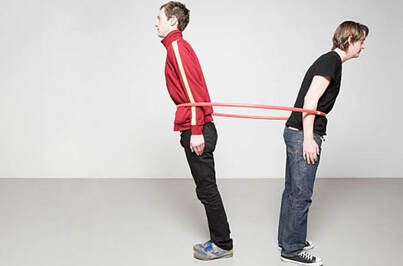 Performers, like actors, benefit from being looser and more limber, freeing up the body to be more malleable and able to adapt and transform to whatever the scenario requires. Stretching can help gain control of your body to fully express dramatic intention and expression. Assisted stretching is an ideal way to release physical tension, free the breath and reach a level of creativity to express what they want to achieve in their body and voice. It also helps to break down postural habits and unlock a more expressive and responsive body which can be enormously liberating and enable new and varied physical and emotional representations. Whilst you’re at home, you can help to maintain your flexibility through the food you consume.
Staying hydrated is essential to remaining supple and flexible, helping lubricate joints and delivering essential nutrients to your body. As well as drinking lots of water, eat loads of water dense foods such as cucumber, tomatoes, spinach, lettuce, mushrooms, melon, strawberries, broccoli, brussel sprouts, oranges, apples, blueberries, broths and soups, zucchini, celery, yogurt, bell peppers, cauliflower, cabbage, grapefruit and coconut water. Try to limit caffeine intake to 100mgs per day. Caffeine dehydrates you and makes you feel stiff in your joints and tissue. Magnesium rich goods like green vegetables, especially kale and spinach, nuts and seeds and dark chocolate (85%+) help relax muscles, lessen chronic pain, migraines, stress and anxiety and boost energy. Sulphur rich foods – cruciferous vegetables broccoli and cauliflower - are important for the health of connective tissues Foods high in Vitamin C, (kiwis, berries, and broccoli) can help the production of collagen and other components that build youthful elastic muscles and connective tissue Inflammatory foods, sugar, processed carbs, and unhealthy fats can create stiffness and bloating. Increase consumption of anti-inflammatory foods - fish high in Omega 3 fatty acids like salmon, mackerel, tuna, and sardines, ginger, turmeric, pineapple, green leafy vegetables, nuts and seeds and berries Don’t eat too much protein as excess protein can dehydrate you and make you feel stiff Avoid toxins like MSG (my body aches after I eat it!) Try to have a 12-16 hour fast daily – have atleast a 12 hour break between dinner and breakfast You might also like to consider the following supplements:
The answer is both. BUT, in quite a different way before than after exercise.
Dynamic stretching before you exercise, particularly if you've just woken up or been sedentary for some time, is essential to warm the body up and prevent injury. But the key is to do DYNAMIC stretches that involve actively moving your limbs to get the blood flowing and moving it through the full range of motion in the joint. This includes hip and arm circles, walking with your knees up to your chest and doing walking lunges. You should not be holding stretches in a static way - leave that until after exercise when your muscles are warmed up. STATIC stretching should be left until after exercise, when your muscles are looser and more willing to give and allowing you to go deeper into the stretch without risking injury. Static stretching increases blood flow and speeds up your recovery, reducing stiffness, improving the health of your muscles and joints and your overall flexibility and mobility. So when is the best time to visit us for a stretch? Ideally, don't have an assisted stretch before a heavy gym session or a big run. Schedule your stretch for after or the day in between. Try to walk a little before your stretch, but we always have the heat massage to get your blood flowing. |
MargieI'm Margie, the owner of A Good Stretch. I love helping you feel good! Archives
October 2023
Categories |
Photo from shixart1985

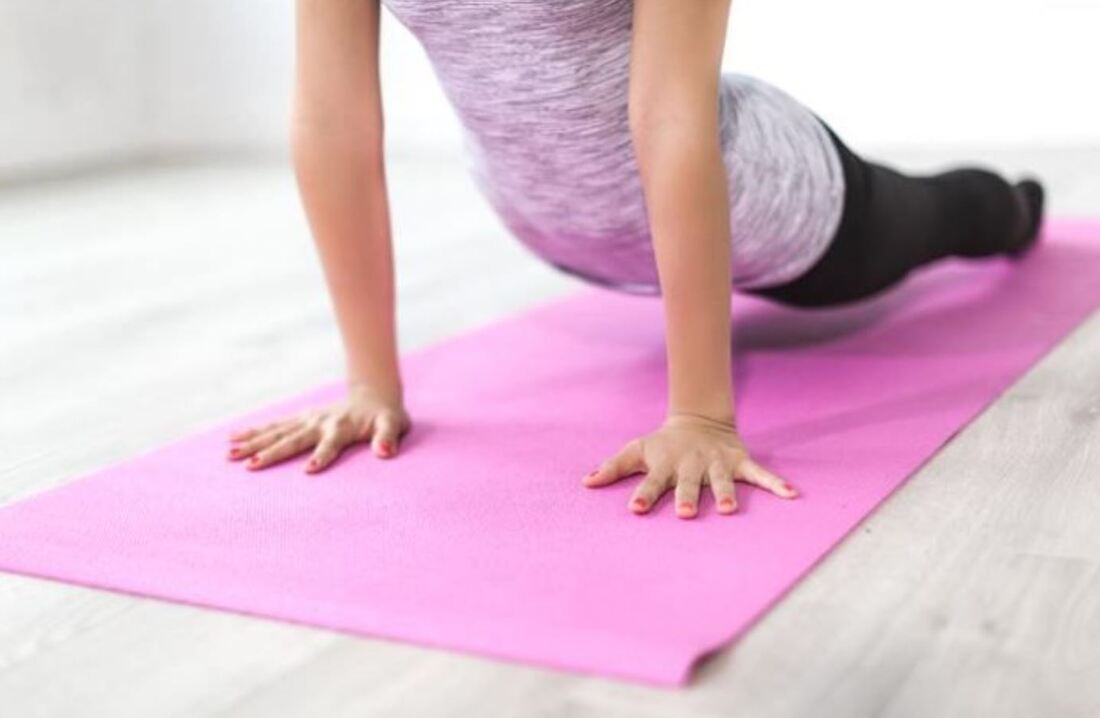
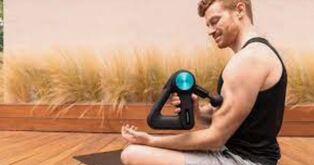

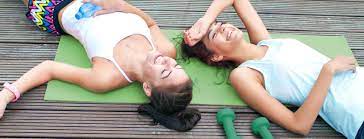
 RSS Feed
RSS Feed
